
Volkswagen T-Roc review 2023

Introduction
Volkswagen now sells eight different SUVs — it might be nine or 10 depending on how loose your definition is — but it's this T-Roc that is, arguably, the most appealing. Broadly Golf-sized, it sits between the Tiago and Tiguan in the VW range, offering a little extra practicality with a soupçon of style.
Introduced four years ago, a mid-life refresh has given it a bolder look, added extra luxury and bolted on more technology. There’s also a redesigned cabin, so can the T-Roc petrify the opposition or is it facing a rocky future?
Select's rating score* - 3.9 / 5
At a Glance
The Volkswagen T-Roc is a compact SUV with little ambition to be anything too exciting, so you’ll find the same range of engines that appears in countless Volkswagen group cars, from the Skoda Fabia to the Audi A4 — although there is a 300hp T-Roc R available for those wanting something like a Golf GTI on steroids.
Ignore that, and you’ll find a range of sensible petrol and diesel engines, ranging from 115hp to 190hp, with six-speed manual and seven-speed automatic gearboxes. The highest output models are also available with four-wheel-drive for a bit of added capability in adverse conditions.
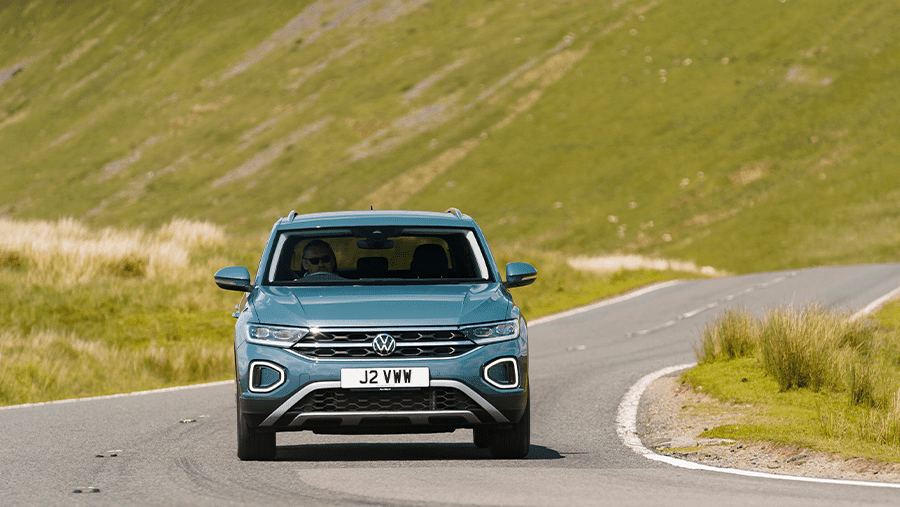
While it’s had a facelift, there’s little visual difference. You'll spot new headlights, a more sophisticated grille and a revised bumper with bolder contouring at the front, while the rear has new LED taillights and an updated bumper. It’s not much, but it’s enough to create a more modern aesthetic.
It’s inside where most of the work has taken place, with the T-Roc gaining a new dashboard that replaces the dated setup of the old model with a digital-first design. There’s a large infotainment screen, a digital instrument panel and touch-sensitive panels, and all wrapped up in a new, softer dashboard.
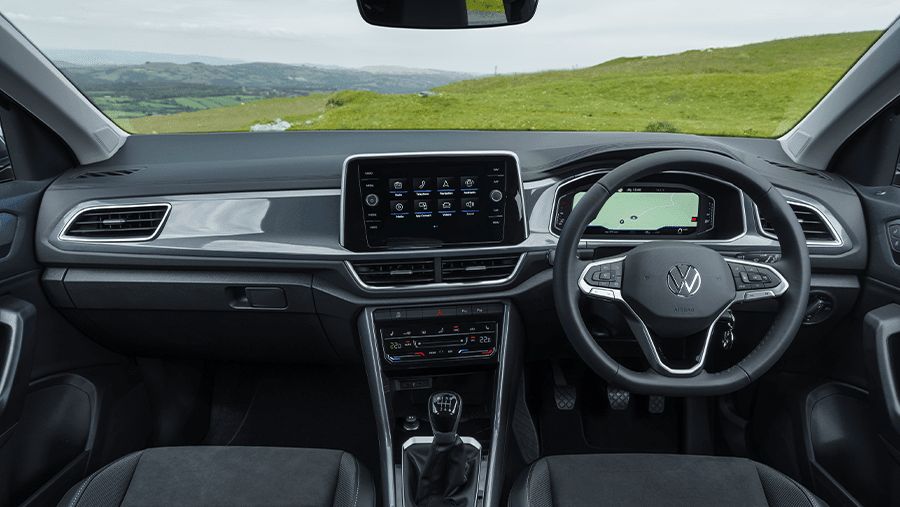
Key Features
Volkswagen fitted its digital instrument panel to the T-Roc. Pretty much lifted wholesale from Audi, which calls it a ‘virtual cockpit’, the 10.25-inch LCD panel sits where the traditional speedometer and rev counter would have been, although it’s only found on higher spec models.
Customisable to your tastes, it displays all the information you’ll need clearly and concisely while you're on the move. Sporty drivers can focus on speed and revs, while those heading to new locations can put satellite navigation front and centre.
Easy access to audio controls, telephony, and assist systems means much of your day-to-day interaction with the car will be right in front of your eyes.

Performance & Drive
We spent our time in a T-Roc powered by Volkswagen’s impressive 1.5-litre petrol engine. With 150hp and 250Nm of torque, there’s enough poke to keep up with traffic and offer a little bit of entertainment. The 0-62mph dash is dealt with in 8.4 seconds, helped by a relatively low kerb weight of 1,345kg.
Devoid of any of the optional adaptive suspension modes and fitted with sensible 17-inch alloy wheels, this is as well-balanced a T-Roc as you’ll find, and all the better for it.
While the headline figures suggest it is reasonably quick, what the numbers mask is how effortless extracting that is. Even with a smooth six-speed manual gearbox rather than the seven-speed automatic, there’s little break in power delivery as the T-Roc just gets on with the job at hand. It’s unfussed by clumsy gear changes or ham-fisted manoeuvres, making you feel a far better driver.

Comfort is the focus here, with those relatively small wheels (at least by modern standards) affording tall tyres that absorb the road's imperfections better than most of its rivals. Well-tuned suspension prevents the car from feeling bouncy, though, leaving you almost gliding along the tarmac.
Damping the car well means it’s not quite so capable in the corners. Body roll is notable, although it’s unlikely ever to reach the point where it interferes with ultimate road holding, at least on public roads. Solid steering that’s precise, if lacking in feel, and a reassuring sensation of stability and grip makes swift progress easy and uninvolving.
Straight-line runs along motorways leave the T-Roc feeling stable and secure, with the aerodynamics and soundproofing cutting out much of the external noise you often find with cars of this size. It’s refined and relaxed.

In town, it gets better. Those tall tyres, softish suspension and light controls make it a piece of cake to manoeuvre around the city. The petrol engine is quiet, too, with little in the way of vibration.
Exciting, it isn’t, but the T-Roc is an impressively capable car in all environments.

Running Costs
Leasing costs for the T-Roc are broadly similar to its mainstream rivals, and frankly, the car is a step up from most of its competitors. It’s also well equipped, so the options list will need less attention which will help to keep costs down.
Promised fuel economy of 47.1mpg seems punchy for a petrol-powered SUV, but experience suggests it’s not going to be impossible to achieve. Challenging, yes, but if you return less than 40mpg on average, you need to look at how heavy your right foot is.
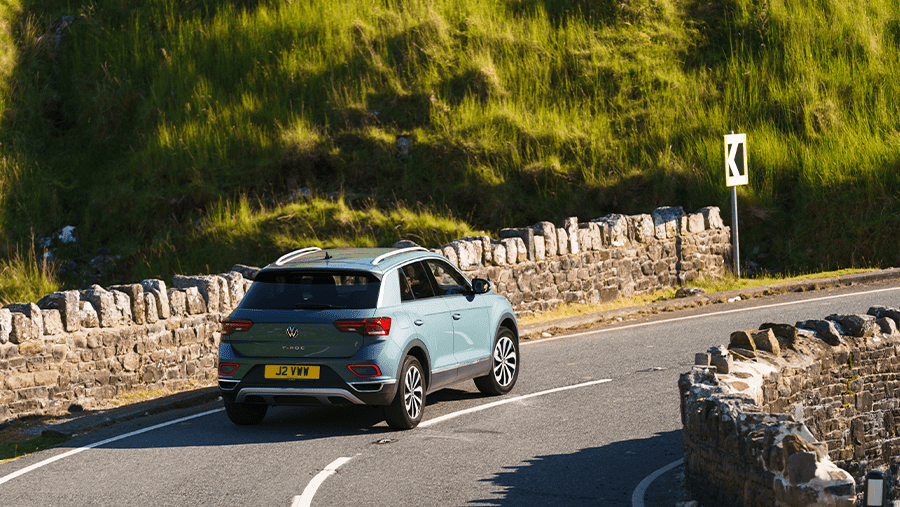
CO2 emissions of 135g/km put the 1.5-litre T-Roc into the 33% BIK band for company car drivers with, for this specific model, a P11D value of £30,015.
Warranty cover is limited to three years or 60,000 miles, which feels low when the likes of Hyundai or Kia will cover a car for five or seven years. Servicing requirements vary depending on your driving habits; it’s possible to stretch things out to two years or 18,000 miles between services, although those covering shorter distances will face an annual check-up.

Interior
This is where Volkswagen has spent its facelift budget, boosting the ambience of the T-Roc’s cabin significantly. Where it used to be a tad dour, with surprisingly cheap materials throughout the cabin, it’s now plush, sleek and stylish.
Material qualities have taken a leap forward, so soft-touch plastics and bright faux-metal trim around the car now lend it a suitably premium appeal. That’s boosted by an 8.0-inch infotainment screen that, while still sticking out proud from the centre stack, feels better integrated.
The climate controls sit below and are now a touch-sensitive panel rather than a trio of rotary controllers — a slight backwards step in usability but a forward step in aesthetics. Happily, the steering wheel doesn't get touch-sensitive controls — Volkswagen has dropped the stylish but insufferable system, replacing it with a conventional and far more usable set of physical buttons.

It’s loaded with equipment, with even this mid-range Style model coming equipped with a 10.25-inch digital cockpit — Volkswagen’s name for the all-digital instrument panel the driver gets instead of traditional analogue dials. It’s neat and customisable, allowing for lots (or little) of information to be presented to the driver. There’s also adaptive cruise control, satellite navigation, Bluetooth connectivity for two smartphones at a time, and both Android Auto and Apple CarPlay.
Space for all is plentiful. The T-Roc is wide by sector standards, so there’s a lot of elbow room. The SUV stance also provides good headroom, so all but the tallest of adults will be able to squeeze in without a problem. Even three in the back would be achievable, if not entirely comfortable.
The boot is a good size, accommodating 445 litres of family detritus, 23 litres more than a Nissan Juke. An adjustable floor provides an entirely flat surface from boot lip to seat back when in its highest position, making loading a cinch. Drop it down, and you extend the capacity but introduce a step.

Safety
Euro NCAP tested the T-Roc back in 2017, when it was first introduced. It scored a maximum five-star rating then, although the testing regime has got a little tougher since then. However, there’s no reason to doubt it would score well now, thanks to the huge amount of safety equipment that Volkswagen has included.
Automatic emergency braking, backed up by distance monitoring, distance alerts and collision warnings, should help avoid an accident. Lane-keeping assistance, lane departure warnings, and predictive pedestrian and cyclist protection add further levels of protection.
There are just two Isofix attachments in the T-Roc, both in the rear. While it’s a wide car, it’s not wide enough to squeeze three child seats in the back.
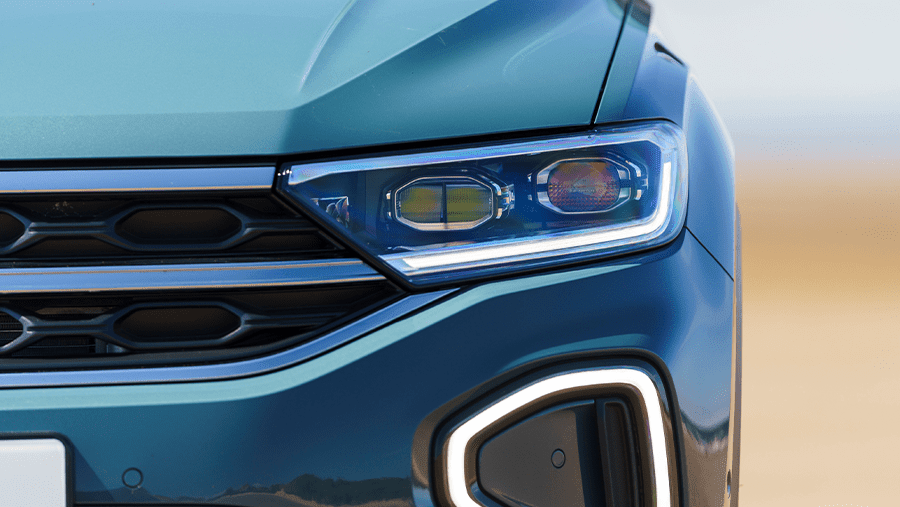
Options
Even the entry-level Life specification comes well equipped, with the mid-range Style model’s most notable upgrades, including built-in navigation and the impressive digital instrument binnacle.
The pseudo-sporting R-Line model adds extra dynamic styling and trim to the exterior and some plush sports seats and badging on the interior. It also gains variable-ratio steering and sports suspension, although they are far from essential.

An optional Winter Pack adds heated seats and heated washer nozzles which, at £300, might be worth considering. A rear-view camera, at £280, would be a wise investment, as rearward visibility isn’t the T-Roc’s strongest point.
Dynamic chassis control adds adaptive suspension and variable-ratio steering. It doesn't add much, especially when it costs £1,075.
Paint choices beyond an off-white colour cost from £410 for solid colours, or £475 with a contrasting roof. Metallic options, including two-tone choices, cost an extra £690, while a couple of particularly lustrous colours will set you back £835.
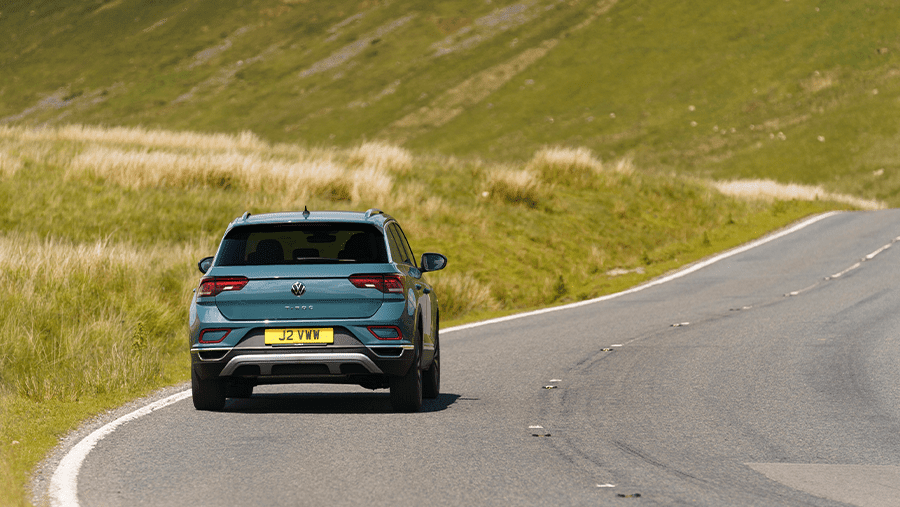
Rival Cars
Seemingly everybody makes a compact SUV. The Nissan Juke is the most obvious rival, with its bold design standing out against the more reserved T-Roc. It’s cheap to run, especially in hybrid form, but it already feels a little dated with a somewhat drab cabin.

The Ford Puma is more fun to drive, at the expense of ride quality. It’s also got some clever touches, such as a huge compartment hidden under the boot floor to boost practicality. It’s a bit tight for space in the cabin, though.
Much of the T-Roc’s competition comes from within, though. The SEAT Arona, Skoda Kamiq and even Volkswagen T-Cross are all broadly similar, and the T-Cross offers all of the Volkswagen style at a lower price point. That's for a good reason, though, as you will miss out on many of the luxury touches and high-tech cabin.

Verdict
The Volkswagen T-Roc is an impressive car, blending off-road style and a raised driving position with refined hatchback handling and ride. Equipment levels are strong, with the mid-range Style model offering a balance between cost and comfort that is difficult to beat.
As a driver's car, it’s not going to meet your needs — although the potent T-Roc R might — but as a family car or commuter vehicle, there are few better suited to the role.
It’s at its best when you resist the temptation to splash out too much, sticking with the middle of three petrol engine options and middle-of-the-range trim. At that point, it's anything but middle of the road.
Where to next?
View our latest Volkswagen T-Roc lease deals - from just £233.92 per month inc VAT**
Looking for a great leasing deal? Check out our incredible range of Special Offers
New luxury Hatchback? Read our latest Car Reviews and find the right model for you
Want to know more about leasing? Take a look at our comprehensive Leasing Guides
Interested in everything motoring? Why not catch up on all the latest Car Leasing News.
*Score based on Select’s unique meta score analysis, taking into account the UK’s top five leading independent car website reviews of the Volkswagen T-Roc
**Correct as of 06/02/2023. Based on 9 months initial payment, 5,000 miles over a 48 month lease. Initial payment equivalent to 9 monthly payments or £2,105.28 Ts and Cs apply. Credit is subject to status.




















